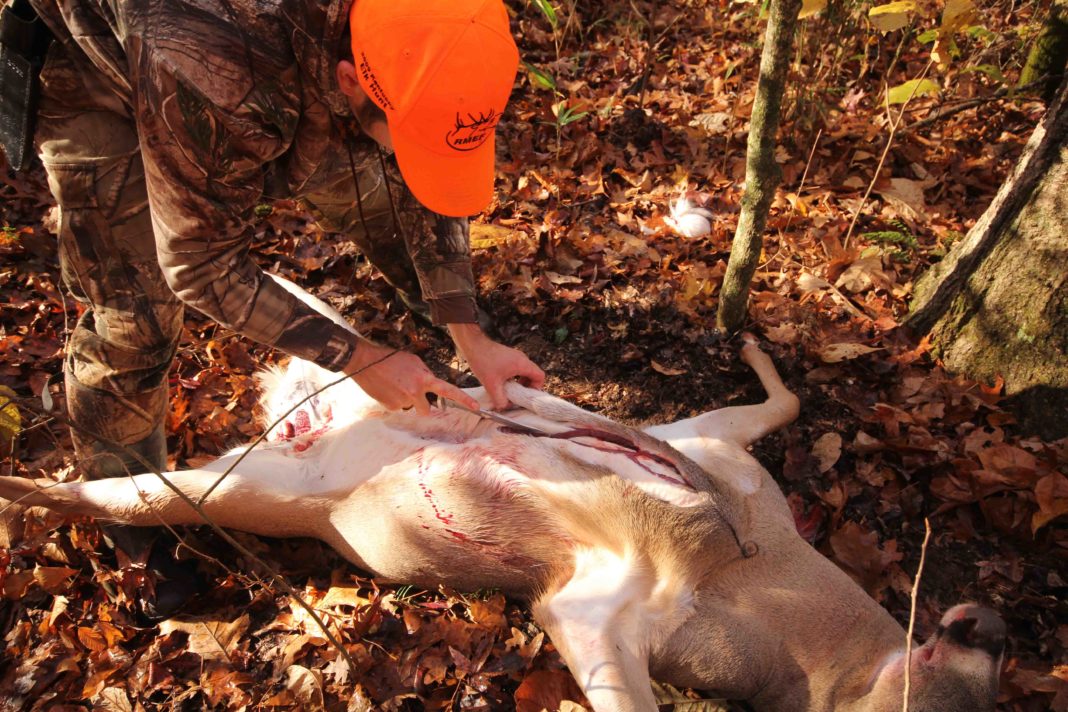I hear people all the time say they do not like the taste of deer. Some people say that just because they know what they are eating and have a preconceived notion that it will not be good. Others have legit gripes. Mainly due to poor handling by the hunter from the time of the kill up until it was cooked. This often results in gamey, tough meat. Here are some tips to help combat bad tasting venison.
- Hunting in the real world is not like the Outdoor Channel portrays it to be. Hunters make bad shots from time to time and the deer has to be tracked for a while. Shot placement and the stress the animal received while being trailed plays a big role in gamey meat. The faster a deer dies, the sooner it can be field dressed. This will reduce the amount of acid that builds up in the deer’s muscles.
- Hunters often fail to get the deer cooled as quickly as possible. The first step it to field dress the animal immediately and was out the cavity with cool water. Be sure to dry the cavity out as the water is a breeding ground for bacteria. If the temperatures outside are in the mid-30s or cooler it O.K. to let the deer hang. Anything warmer than that and the deer needs to hung in a walk-in cooler, or skinned, quartered and put on ice if you do not have a walk-in.
- A whitetail is not a hard to deer to quarter. Because of how their joint and tissue hold their legs on, a simple pocket knife can have a deer quartered quicker than you might think. Us a saw of any sorts to cut through bones allows bone marrow, small pieces of bone, as well as shaving from the saw to get in the meat. Stick with a sharp knife and your meat will be free of small bone pieces that can contaminate the meat.
- Growing up as a kid I can remember how much my dad loved the taste of fat from a good cut of beef. The same does not hold true with deer fat. Simply stated, deer fat tastes awful. It is not red meat, cut it off before it is made into steaks or burger. This includes all fat and silver skin.
- Every year before deer season begin we call in an order to the local butcher shop for beef suet. Even though we removed all of the deer fat, we need to add some sort of fat, whether beef or pork, when grinding it. If this is not done the lean venison will quickly fall apart when making burgers, meat loaves, etc… We add beef fat at a ratio of 3:1 (three pounds venison per pound of fat).
- If you have the means, the time and the knowledge I recommend processing all your deer yourself. When you take a deer to a meat locker you are not for sure how the meat is handled, or if you even get your own deer back. For all you know you could be getting someone else’s deer back that was gut-shot and not properly handled after the shot. If you have to take a deer to a processor research the facility by talking to other hunters who have used it, and also talk with the workers. Hopefully the will be honest with you.
- Do not overcook venison. Cooking deer for too long causes it to become chewy and dry. Venison is best cooked to medium-rare, but the outside needs to be cooked. To accomplish this, the grill must be hot enough to quickly sear the outside and lock in the flavors and juices. Turn your venison only once, and there are not grill marks after three minutes or so the grate is not hot enough.
- Freezer-burnt food, whether it is venison or other food, does not taste good. Some people use a vacuum sealer, but if go this route, buy a good one. A cheap one will not keep the food fresh. When we butcher our deer, we make wrapping the meat a family affair with all involved. We put one-pound portions of burger in sandwich bags and the steaks and roasts are wrapped with plastic wrap. After the plastic wrap it is wrapped with good freezer paper and tapes. We write on each package what cut of meat it is, who killed it and the date of the kill.
I hope this advice helps you have a meal that tastes great. A couple of other quick tips is the younger the deer, the better, more tender it will be. But this might not settle well with trophy hunters. What many cooks do not know is to thaw venison slowly to prevent toughness, and to serve venison hot and keep the remainder hot to prevent it from getting a waxy taste.









![The Best Deer Camp Chili [VIDEO] Deer Chili Ingredients, Tomatoes, Chili Spices](/wp-content/uploads/2015/10/Deer-Chili-Deer-Camp-Recipe-218x150.jpg)








![How to Call Elk Early in the Season [VIDEO]](/wp-content/uploads/2016/08/byers003-218x150.jpg)




![Idiots Disturb Hunter: How Would You Have Handled It? [VIDEO]](/wp-content/uploads/2015/10/DSC00110-e1474487693878-100x70.jpg)
![Albino Buck Shocked to Shed His Antlers [VIDEO]](/wp-content/uploads/2015/10/AlbinoDeer-100x70.jpg)